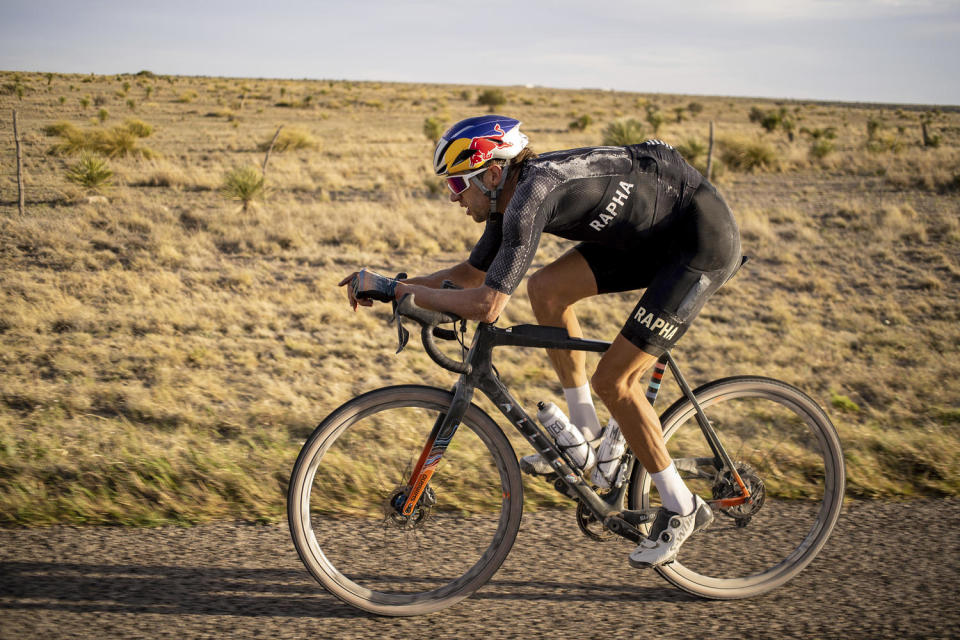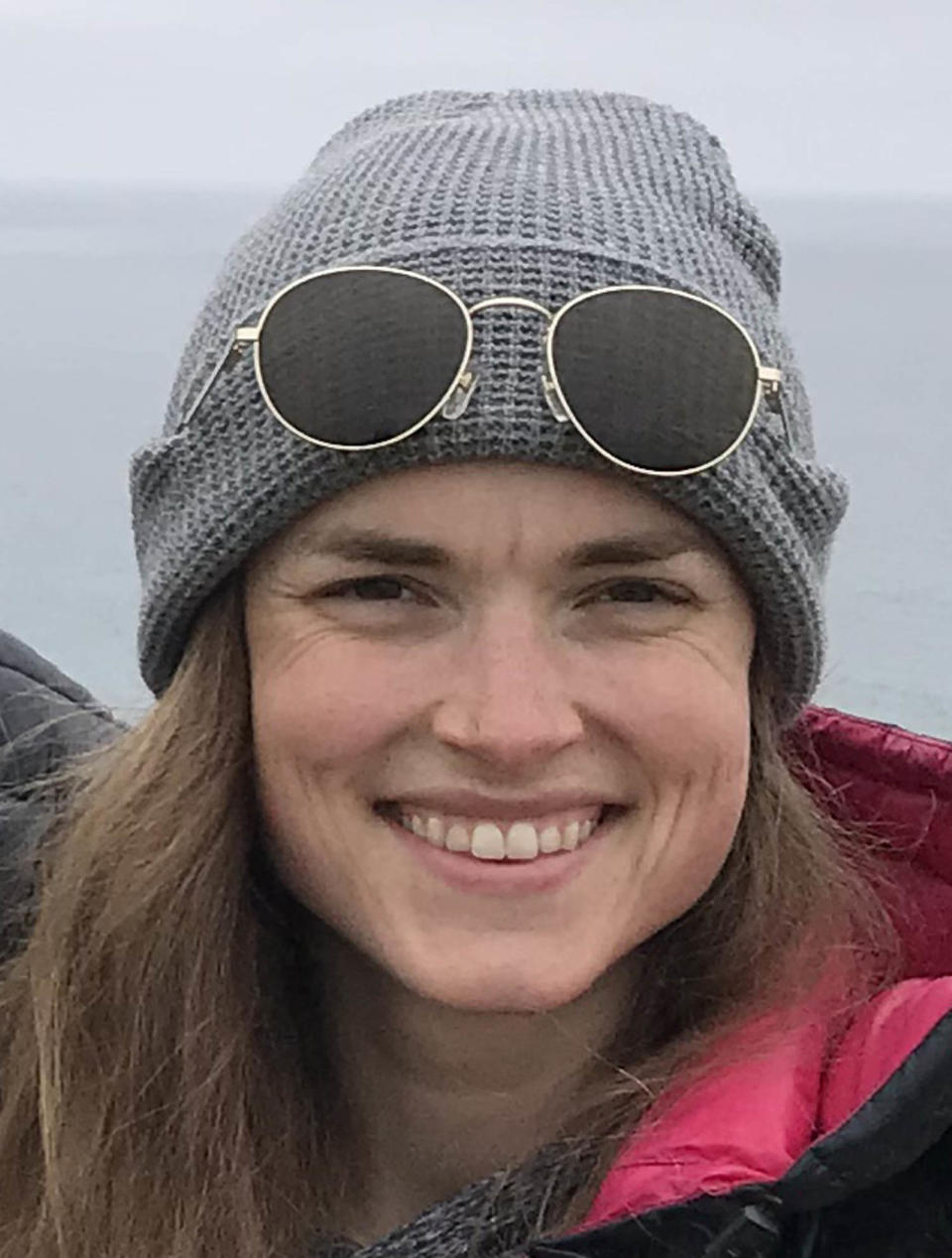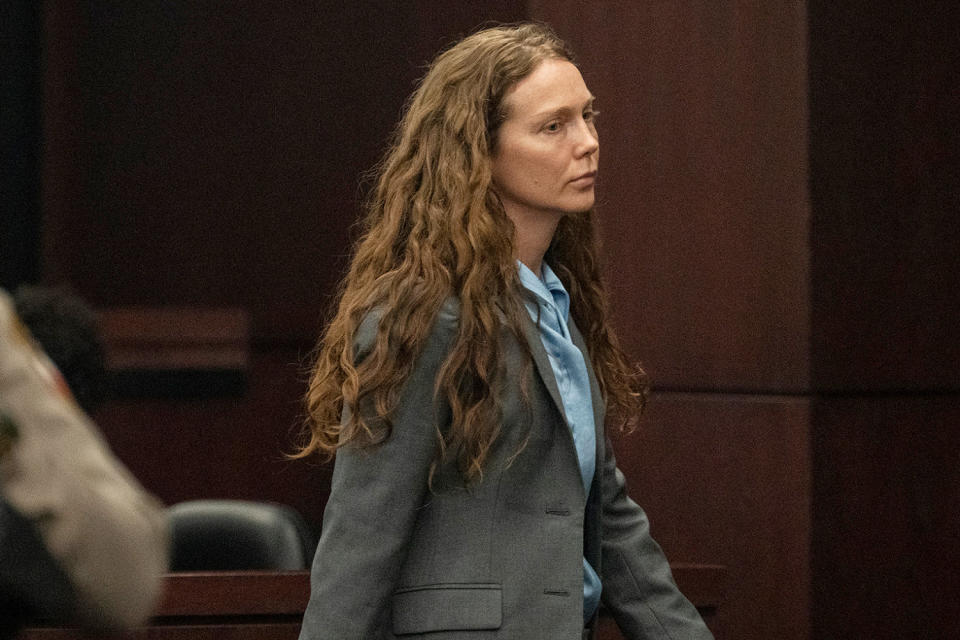Fueled by jealousy, Kaitlin Armstrong fatally shot an elite cyclist and then led officials on an international manhunt
In the weeks after she fatally shot an elite cyclist in Texas, Kaitlin Armstrong led authorities on a manhunt that spanned thousands of miles, crossed international borders and nearly ended with authorities deflated and empty-handed.
Eventually, Armstrong was caught and, in November, she was found guilty of shooting Moriah “Mo” Wilson, 25, three times in a jealousy-fueled rage and sentenced to 90 years in prison.
This is the account of Armstrong’s escape — and capture — as told by the investigators who tracked her from Austin to the Costa Rican beach town where an unusual mix of deception and yoga finally led to her apprehension.
One day after Wilson, a rising star in the increasingly popular sport of gravel racing, was found with gunshot wounds in the Austin apartment where she had been staying for a competition, investigators questioned Colin Strickland, the pro cyclist with whom Wilson had previously been involved.
Strickland told authorities he’d spent time with Wilson the day before: They’d shared a meal and gone for a swim before he dropped her off, according to a transcript of the interview obtained by “Dateline.”

Strickland told investigators that he’d been with Armstrong, 36, for three years, but he’d gotten together with Wilson after he and Armstrong briefly ended their relationship in fall 2021, according to the transcript. Wilson, he said, was now listed under a different name in his phone — a fact he attributed to his “right to have a friendship with this person without having, like, constant strife.”“He did that because he knew his girlfriend Kaitlin had gone through his phone in the past,” Richard Spitler, the Austin homicide detective who led the investigation into Wilson’s killing, told “Dateline. “He didn’t wanna start any issues, any drama.”
Security video reviewed by Austin police showed a black SUV near the apartment where Wilson was killed around the time of her death, and Spitler saw what appeared to be the same vehicle parked in Strickland’s driveway.
When Spitler asked Strickland about it, he said the vehicle belonged to Armstrong. Strickland refused to drive it, Spitler recalled him saying, because it was a “girly car.”

At the time, Spitler wasn’t sure what to make of the claim, though authorities later concluded Strickland was not involved in Wilson’s murder, and he has not been accused of any crime. (Strickland declined to speak to “Dateline,” but in a statement released days after the killing, he said there was “no way to adequately express the regret and torture I feel about my proximity to this horrible crime.”)Believing she was a potential person of interest in the killing, authorities arrested Armstrong on an outstanding misdemeanor warrant, another Austin detective, Jonathan Riley, told “Dateline.” She wasn’t in custody long before authorities mistakenly concluded there was a discrepancy in her warrant, Riley said, and told her she wasn’t under arrest after all.
Armstrong remained at the department, however, and in an interview with a detective, denied knowing that Strickland had seen Wilson while she was in town. When the detective asked if there were issues between her and Wilson, Armstrong responded: “I’m not sure exactly what you mean or what information you’d like,” according to a transcript of the interview.
When the detective bluffed, telling Armstrong falsely that Strickland had described her as upset over the matter, she responded: “That is not accurate.”
When the detective asked Armstrong why her SUV had been near the apartment where Wilson was staying, Armstrong didn’t deny that the vehicle was hers, according to the transcript. Nor did she offer any explanation as to why it was there.
When the detective pressed her, Armstrong said: “I would like to leave, if I’m free to leave.”
May 17: ‘She’s gone’
In the days after Wilson’s killing, tipsters alerted authorities to what Spitler described as a potential motive: Armstrong had been furious over Strickland’s relationship with Wilson.
One said that Armstrong called Wilson so many times that she had blocked her number, according to an affidavit in support of an arrest warrant for Armstrong. On the last call, Armstrong warned her to stay away from Strickland, the warrant says. Another tipster said Armstrong was so enraged that she was “shaking in anger” and threatened to kill Wilson.
After a ballistics analysis showed what Spitler described as a “high probability” match between the gun used to kill Wilson and a Sig Sauer pistol discovered during a search of Armstrong and Strickland’s home, authorities issued the warrant accusing Armstrong of first-degree murder.

But by May 17, when that warrant was issued, Armstrong’s social media had been erased, the warrant says. Strickland hadn’t talked with her since the day after her interview with police, and license plate readers around the city hadn’t captured her SUV traveling anywhere, Spitler told “Dateline.”“We have a lot of addresses that we’re going to get eyes on and check to see if we see her,” recalled Riley, who also serves on the Lone Star Fugitive Task Force. “So far, on the 18th, we’re not finding anything.”
“We can’t find her,” Spitler added. “She’s gone.”
May 25: Fleeing the country on a stolen passport
Investigators eventually learned that Armstrong had traveled to New York, Riley said. Initially, they didn’t know how she’d gotten there, he said, though they believed she’d likely flown given how far she’d gotten in a relatively short amount of time.
On May 25, the Lone Star Fugitive Task Force released a video of Armstrong inside Austin-Bergstrom International Airport. Eleven days earlier, the task force said, she’d taken a New York City-bound flight via Houston.
The short clip showed Armstrong wearing a black face mask and a jean jacket. A yoga mat was tucked into her backpack.
Riley recalled discovering the clue that helped authorities learn where Armstrong had likely traveled next. During a search of her home, authorities found — and photographed — a passport card that belonged to Armstrong’s sister, Christine, who lives in New York, Riley told “Dateline.”
Riley recalled seeing the photo, so he asked a colleague with the Department of Homeland Security to check if anyone with her name had traveled internationally.
“And within about 10 or 15 minutes of reaching out to him, he got back to me and confirmed that a Christine Armstrong with the same date of birth had traveled from Newark to San Jose, Costa Rica, on the 18th on a one-way flight,” Riley recalled.
Investigators with the Marshals Service found Christine at her home in upstate New York. She had no idea where her passport was, Spitler recalled Christine telling authorities, but Kaitlin had recently visited, and Christine had dropped her off at the airport for what she believed was a return flight to Austin. (Christine Armstrong declined to speak to “Dateline.” She has not been accused of a crime in connection with her sister’s escape.)
But with confirmation that someone using Christine’s passport had left the country, investigators turned their attention to Costa Rica. Riley, who had been on the task force for five years at that point, said the news made him feel like a rookie all over again, because fugitives rarely travel that far from home.
“This just got a whole lot more interesting and a lot more difficult,” he recalled thinking at the time.
June 20: The hunt in Costa Rica
Before leaving for Costa Rica, the two U.S. Marshals deputies tasked with finding Armstrong first wanted to figure out why she may have traveled there. One of the likeliest connections they could come up with was one of her apparent passions — yoga — one of the deputies, Damian Fernandez, told “Dateline.”
By the time Fernandez and another deputy, Emir Perez, arrived in the Central American country on June 20, they learned that she was booking different hostels in different areas using aliases — sometimes she went by Beth, sometimes Allison — and then not showing up. The deputies weren’t sure why, Fernandez said, but she was a no-show at the handful of locations they’d connected her to.
They’d also learned that a person matching her description had taken a couple of yoga classes in Jaco, a small coastal town a couple of hours southwest of San Jose, the country’s capital, Fernandez said. Security video obtained by local police and provided to the U.S. Embassy’s diplomatic security service confirmed she’d been there.
But by the time the deputies arrived, Fernandez said, Armstrong had already left.
So their team — which included investigators from the U.S. Embassy — split in two and traveled several hours to Santa Teresa, the small town they believed was her next destination.
There, the deputies — dressed like tourists — scoured the beach, while another investigator attended yoga sessions and a meditation class, they said. But Santa Teresa was filled with women who looked like Armstrong, Fernandez said, and the pair was trying to avoid coming off as stalkers.
“It’s difficult to do what we were doing down there because you don’t wanna look like a creep,” Fernandez said.
Authorities in the U.S. and Costa Rica hadn’t publicized their belief that Armstrong was in Central America, so the investigators came up with a cover story — they were from the U.S. Embassy and searching for a missing tourist — that seemed more believable than reality, the other deputy, Emir Perez, told “Dateline.”
Based on past experience, the deputies believed that if they didn’t find Armstrong in five days, they wouldn’t find her at all, Fernandez said.
June 29: Fooled by a want ad
After several days, the deputies still hadn’t seen Armstrong or gathered any promising leads pointing to where in Santa Teresa she might be. To make matters worse, the deputies said, several investigators had become sick with Covid. And a storm that was likely to turn into a hurricane with shelter-in-place orders was quickly approaching, Fernandez said.
Frustrated, sick and nearly out of time, the team turned to what they described as their last-ditch attempt to find Armstrong: believing she’d likely need money in the near future, they placed a fake ad on a Santa Teresa Facebook page posing as a local hostel looking for a yoga instructor.
When somebody responded who the deputies believed might be Armstrong, they made an appointment to meet on June 29, the day before the storm was forecast to hit. The person ended up canceling, Fernandez said, but in their brief back-and-forth on WhatsApp, the job-seeker had provided clues about their possible location — a hostel called Don Jon’s.
Perez said he found a woman who looked like Armstrong sitting with a man on the hostel’s patio. Posing as a Mexican tourist, Perez began asking her about the place in Spanish, and they replied using Google Translate, Perez said.
When Perez returned to the car, he said: “100%, that’s her. She’s in there.’”
When local authorities helped apprehend Armstrong shortly after, she identified herself to them as Ari Martin, Fernandez said. But once in custody, Fernandez recalled, he asked what her name really was.
“And she looked at me for the longest time,” he said. “She took a big pause, maybe for a minute, and then she told me, ‘Kaitlin.’”
This article was originally published on NBCNews.com

